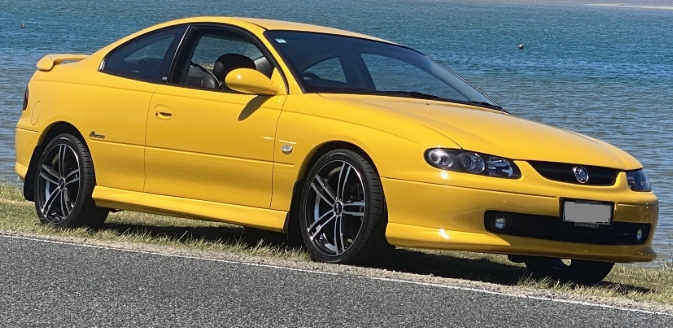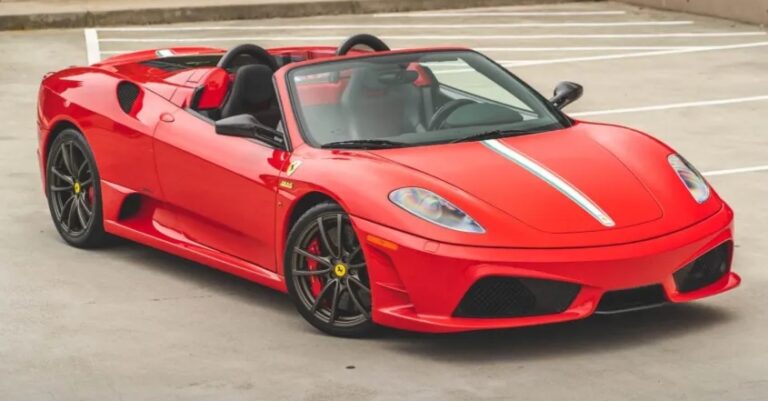The Honda FR-V: A Six-Seater Symphony of Practicality and Innovation
In the early 2000s, the Multi-Purpose Vehicle (MPV) segment was a fiercely contested battleground. Families demanded space, flexibility, and economy, and manufacturers responded with a wave of practical, if somewhat uninspired, vehicles. Amidst a sea of five- and seven-seat people carriers, Honda, a company renowned for its engineering prowess and occasional flashes of left-field genius, decided to ask a different question: what if a family car could offer more width, not just more length? The answer was the Honda FR-V, a unique and brilliantly packaged six-seater that remains one of the most clever family cars ever produced.
Launched in 2004, the FR-V (an acronym for Fun, Recreational Vehicle) was Honda’s bold re-entry into the compact MPV market in Europe, following the discontinuation of the seven-seat Stream. While its Japanese domestic market counterpart was named the Honda Edix, the FR-V was engineered with a distinctly European focus. It was built on a modified version of the globally successful Civic platform, promising car-like handling and a comfortable ride, but its true genius lay within its cabin.
The FR-V’s trump card, and its defining feature, was its “3+3” seating configuration. This layout, previously popularised in Europe by the famously unconventional Fiat Multipla, consisted of two rows of three seats. Honda, however, executed the concept with a level of ergonomic precision and design appeal that was far more mainstream. This arrangement provided a unique social dynamic; a child could sit safely between two parents in the front, and three adults could sit comfortably in the rear without the claustrophobia of a typical third row. This single design choice set the FR-V apart from every competitor, including the Volkswagen Touran, Ford C-MAX, and Toyota Corolla Verso.
.

.
Phase One: The Launch and Initial Lineup (2004 – 2006)
The Honda FR-V arrived in European showrooms late in 2004 for the 2005 model year. From the outset, it was praised for its high-quality interior, solid build, and intelligent design. The central front seat was a masterclass in flexibility. It could slide much further back than the outer seats to create more shoulder room and ensure a passenger was not a distraction to the driver. When unoccupied, its backrest could be folded down to create a large tray table with cup holders, or the entire seat base could be flipped up to reveal a cavernous storage bin.
Honda offered a straightforward range of engines and trim levels to cater to different needs and budgets.
Engine Options (2004-2006):
- 1.7 SOHC VTEC Petrol: This was the entry-level engine, producing 125 PS (123 bhp). Mated to a 5-speed manual gearbox, it was a reliable and economical unit borrowed from the seventh-generation Civic. While adequate for town driving, it could feel strained when the car was fully loaded on motorways.
- 2.0 DOHC i-VTEC Petrol: The more powerful petrol option, this engine delivered a healthier 150 PS (148 bhp). It was paired with a slick 6-speed manual gearbox and provided much stronger performance, making for a more relaxed and capable long-distance cruiser. This engine offered Honda’s signature VTEC character, remaining smooth and refined at low revs but becoming eagerly responsive when pushed.
- 2.2 i-CDTi Diesel: Unveiled in 2005, this engine was a game-changer for Honda. The N22A1 was the company’s first in-house diesel engine, and it was a masterpiece. Producing 140 PS (138 bhp) and a massive 340 Nm of torque, it combined effortless performance with impressive fuel economy. Its refinement and quietness were class-leading, earning it critical acclaim across the motoring press. Paired with a 6-speed manual gearbox, the 2.2 i-CDTi was arguably the definitive FR-V engine, providing the ideal blend of power and efficiency for a family vehicle.
Trim Levels (UK Market Example):
The UK, a key market for the FR-V, saw a simple three-tier trim structure.
- SE: The entry-point model was far from spartan. Standard equipment included 15-inch steel wheels, climate control, all-round electric windows, a CD player, and a comprehensive suite of safety features, including front, side, and full-length curtain airbags, and Vehicle Stability Assist (VSA). The 1.7 petrol and 2.2 diesel engines were available in this trim.
- Sport: Building on the SE specification, the Sport trim added a touch of flair. This included 16-inch alloy wheels, front fog lights, a leather-wrapped steering wheel and gear knob, and unique interior trim details. The Sport trim was exclusively available with the more powerful 2.0 i-VTEC and 2.2 i-CDTi engines, appealing to drivers who wanted practicality without sacrificing style.
- EX: This was the range-topping model, offering a host of luxury features. The EX grade included full leather upholstery, heated front seats, cruise control, an electric glass sunroof, and distinctive 16-inch alloy wheels. This trim level transformed the FR-V from a purely functional family hauler into a genuinely premium and comfortable vehicle.
Phase Two: The Facelift and Rationalisation (2007 – 2009)
For the 2007 model year, the Honda FR-V received a subtle but significant mid-life update. The goal was not to reinvent the car but to refine the formula, improve efficiency, and simplify the range in response to market demands and tightening emissions regulations.
The most substantial change occurred under the bonnet. The two petrol engines—the 1.7 VTEC and 2.0 i-VTEC—were discontinued. They were replaced by a single, highly efficient petrol unit:
- 1.8 SOHC i-VTEC Petrol: This engine, first seen in the eighth-generation “spaceship” Civic, was a technological marvel. It produced 140 PS (138 bhp), effectively matching the output of the outgoing 2.0-litre engine while delivering fuel economy closer to the old 1.7-litre unit. It achieved this by using Honda’s advanced VTEC system to switch between camshaft profiles optimised for fuel efficiency at low loads and performance at high loads. This new engine was paired with a 6-speed manual gearbox as standard, with an automatic option also available.
The acclaimed 2.2 i-CDTi diesel engine was carried over unchanged, remaining the powerhouse of the range.
Visually, the facelifted FR-V was distinguished by subtle cosmetic tweaks. These included a new, darker chrome front grille, smoked surrounds in the headlights, and carbon-effect inlays for the taillights. The door handles were given a chrome finish on higher-spec models, and new alloy wheel designs were introduced. Inside, the changes were minor, focusing on new upholstery materials and a revised dashboard trim finish to give the cabin a more contemporary feel.
Revised Trim Levels (UK Market Example):
The trim structure was also simplified, with the “Sport” designation being dropped.
- SE: The base model now came with the 1.8 i-VTEC petrol engine as standard and continued to offer a generous level of equipment. Key additions over the pre-facelift SE often included alloy wheels as standard, making it an even more attractive proposition.
- EX: The top-tier EX trim continued, offering the full suite of luxury features. It was available with both the 1.8 i-VTEC and the 2.2 i-CDTi engines. Standard equipment was largely the same as before, including leather, sunroof, and cruise control, cementing its position as the premium choice in the lineup.
The End of the Road and Lasting Legacy
Despite being critically acclaimed by journalists and deeply loved by its owners for its reliability, build quality, and unmatched practicality, the Honda FR-V never achieved the sales volumes of its more conventional rivals. The 3+3 seating layout, while brilliant, remained a niche concept. The majority of the market was gravitating towards either traditional seven-seaters or the burgeoning crossover and SUV segments.
In 2009, Honda ceased production of the FR-V for the European market and the Edix for Japan. The company did not offer a direct replacement. Instead, family buyers were gently nudged towards the larger CR-V SUV or, in some markets, the more traditional seven-seat Stream.
The discontinuation of the FR-V marked the end of a brief but memorable chapter in automotive design. It was a vehicle born from Honda’s “Man Maximum, Machine Minimum” philosophy, a design ethos focused on maximising interior space for people while minimizing the space taken up by mechanical components. The FR-V was a testament to this, offering the footprint of a family hatchback but the interior versatility of a much larger vehicle.
Today, the Honda FR-V has a cult following on the used car market. It is sought after by savvy families and individuals who value its unique combination of clever packaging, robust engineering, and car-like driving dynamics. Its six-seat layout remains almost unique in its class, and for those who understand its purpose, no other vehicle quite manages to fill its role. The Honda FR-V stands as a monument to innovative thinking—a bold, practical, and brilliantly executed experiment in what a family car could be.







